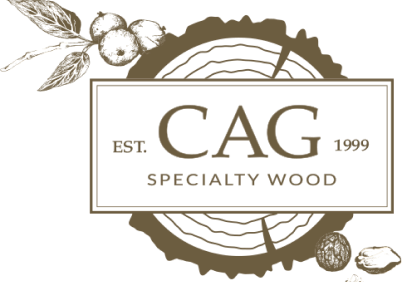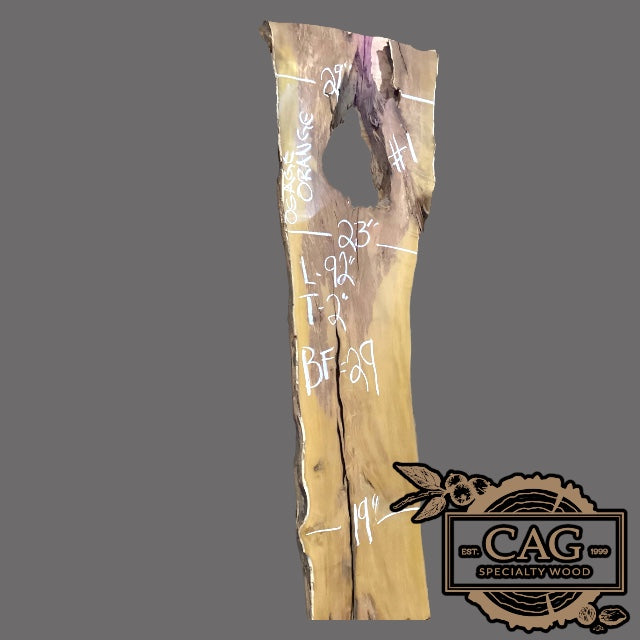
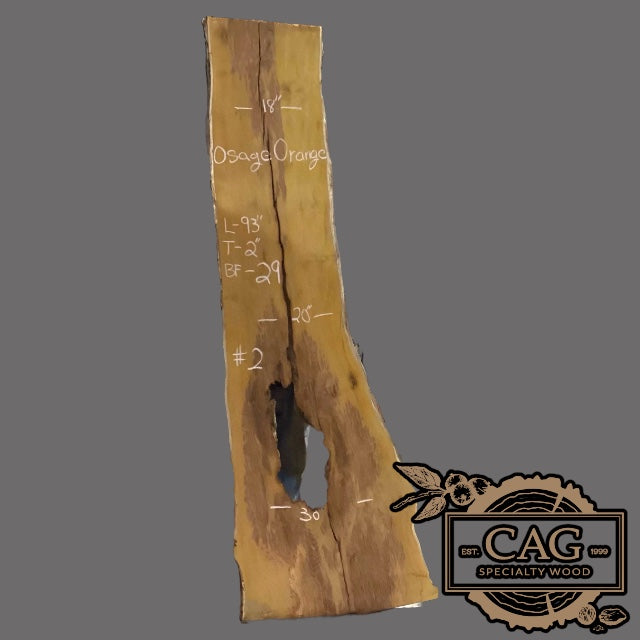
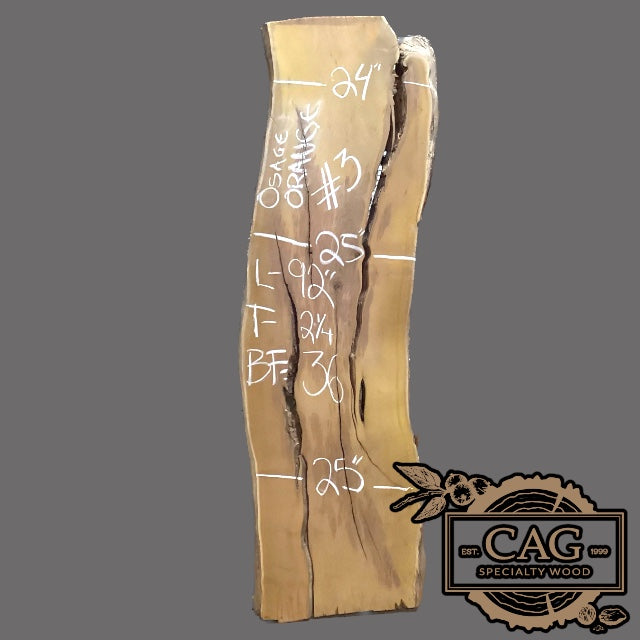
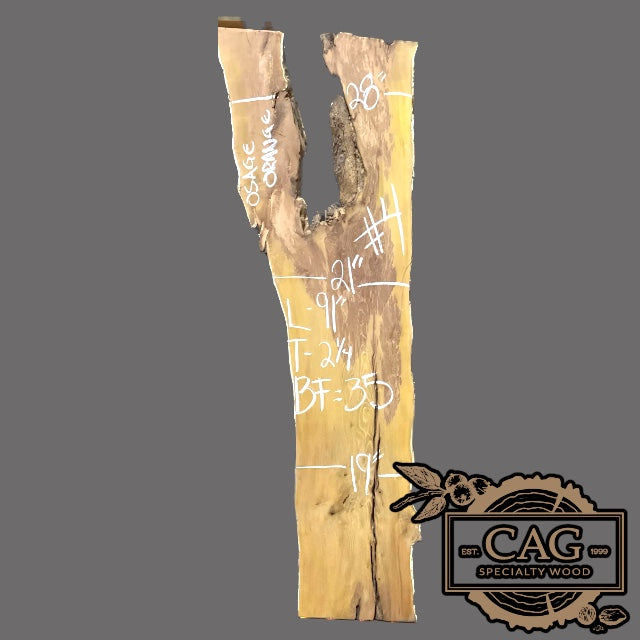
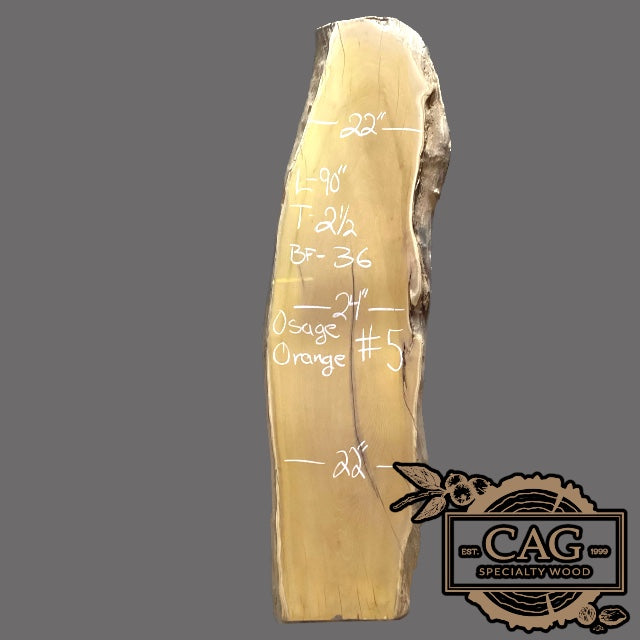
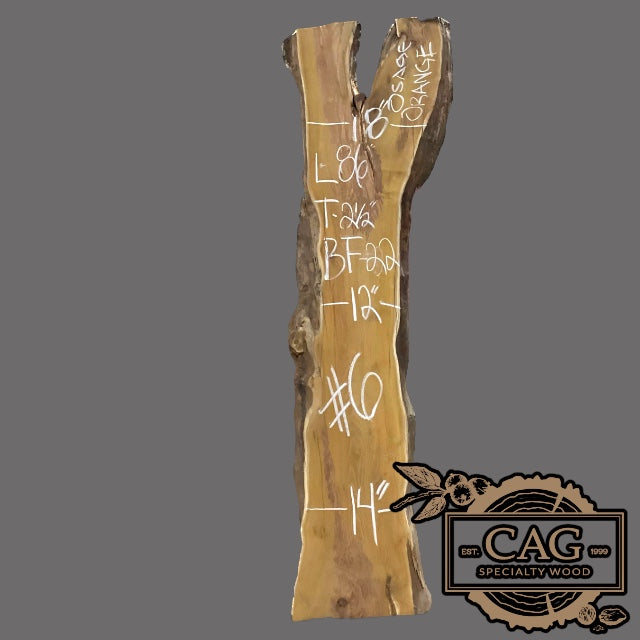

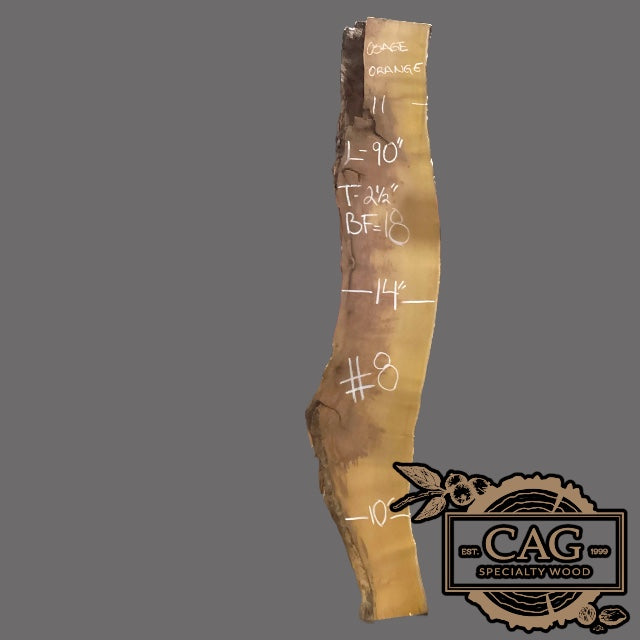
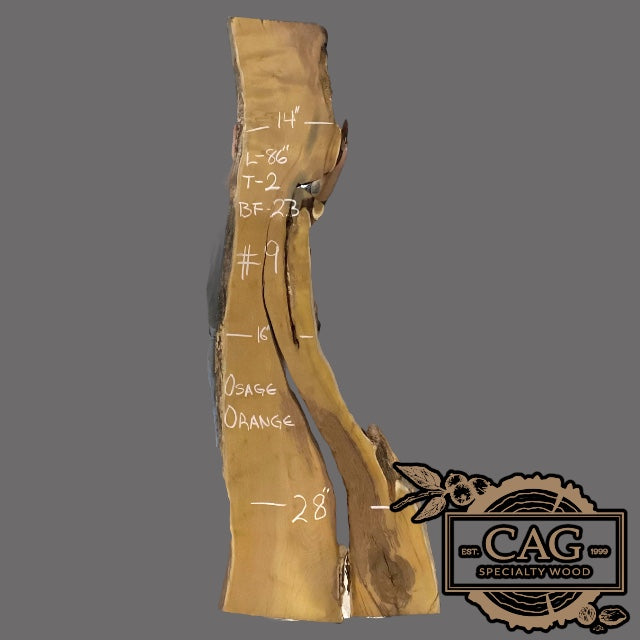
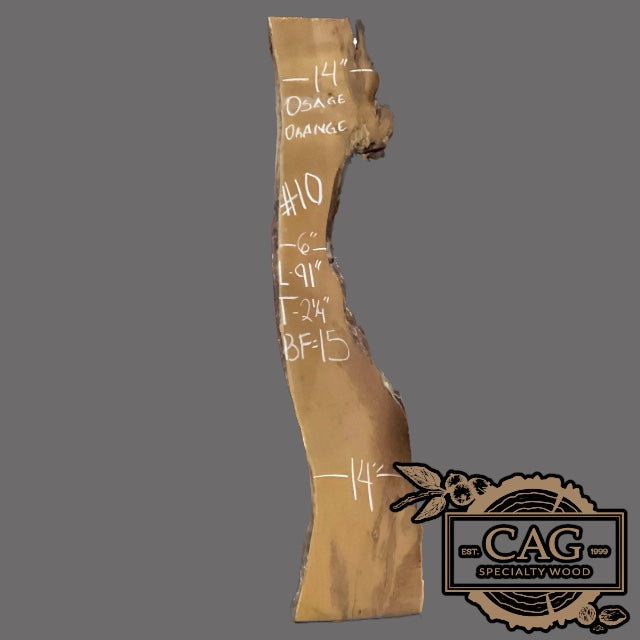
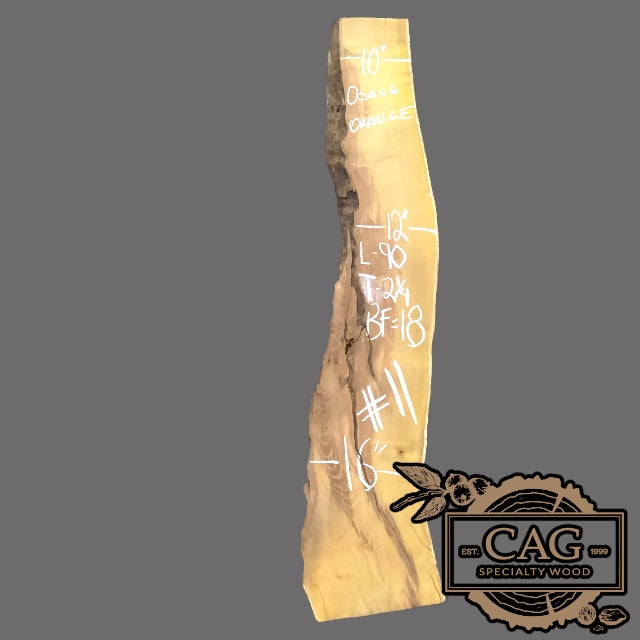

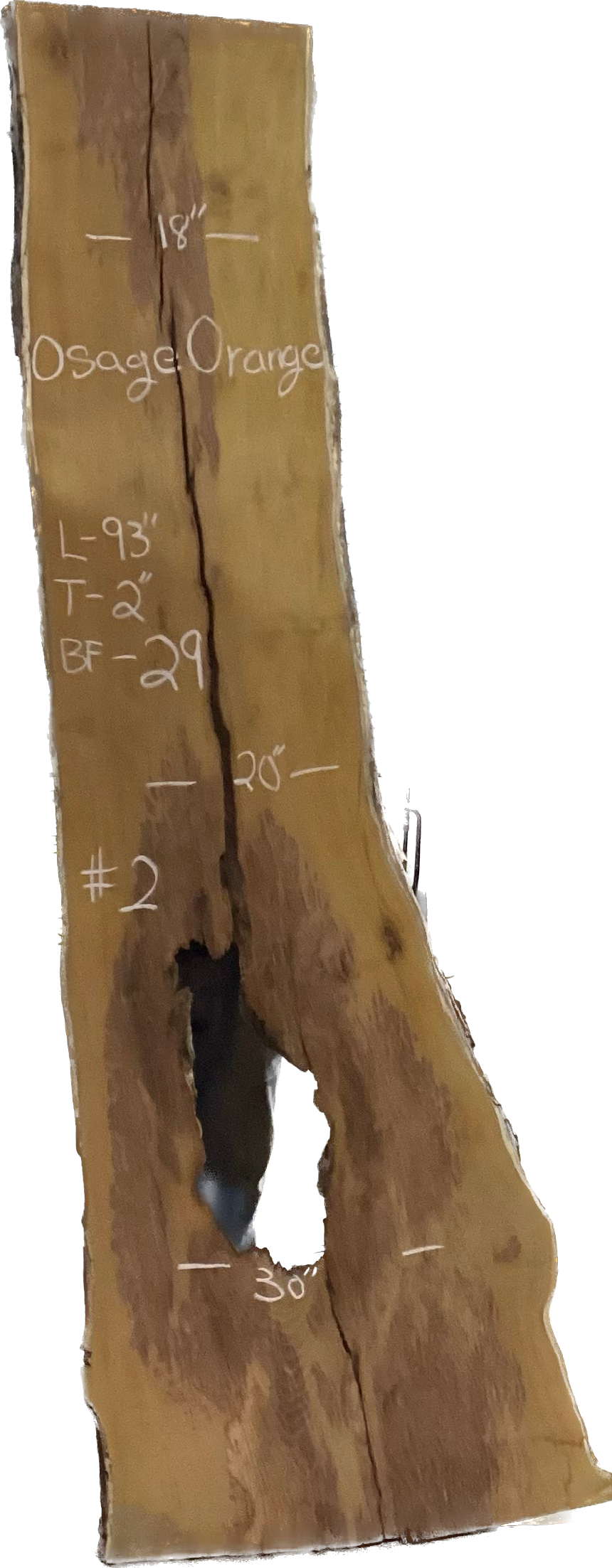

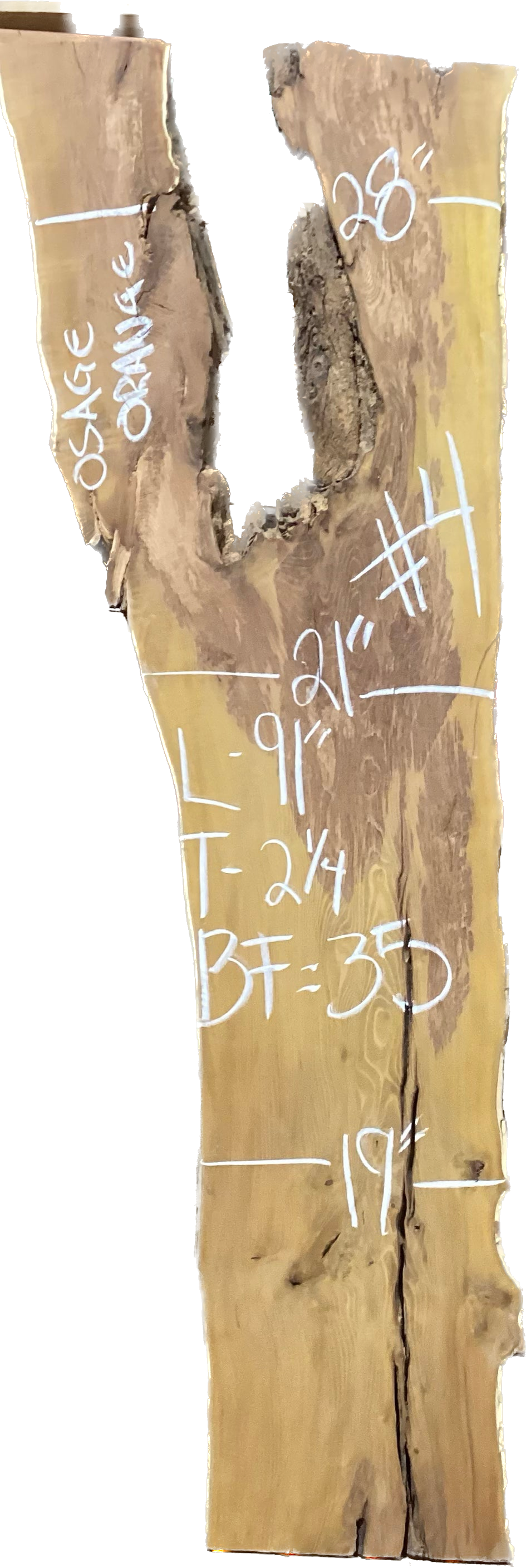


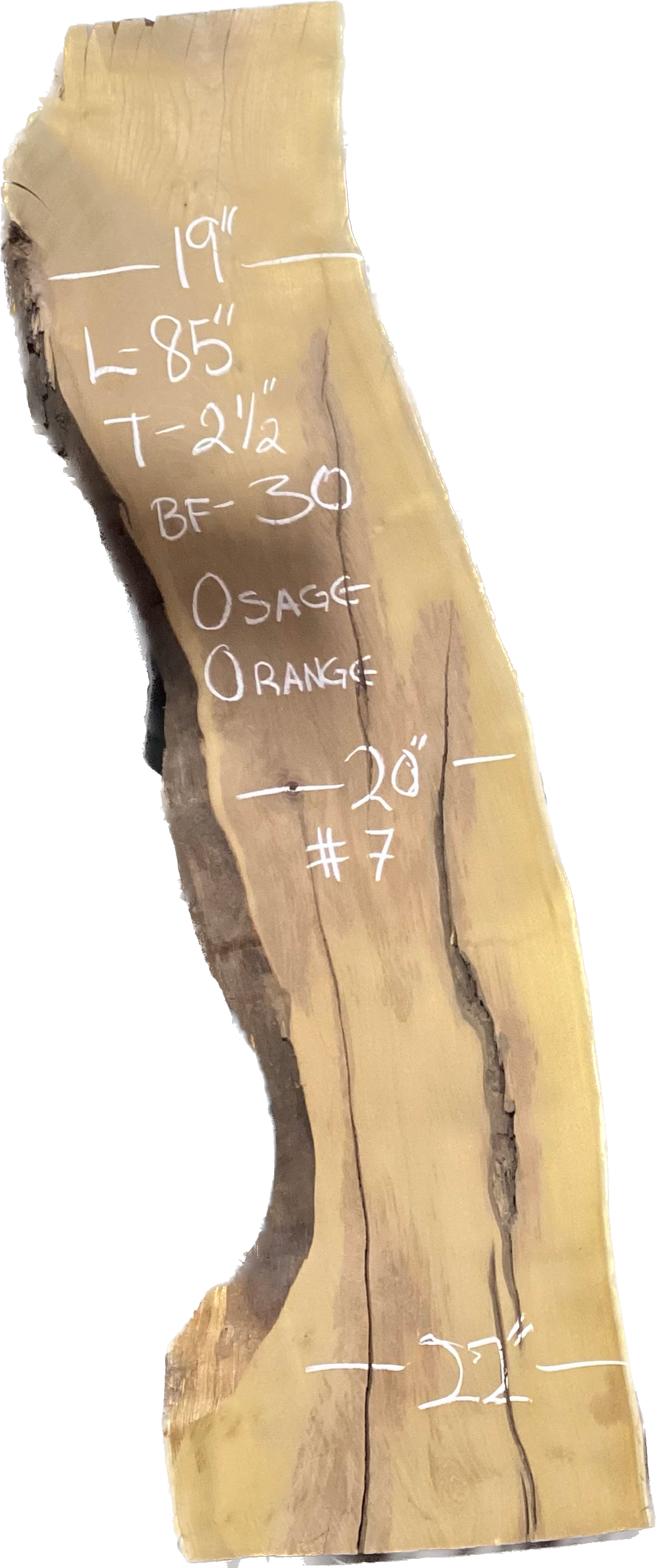

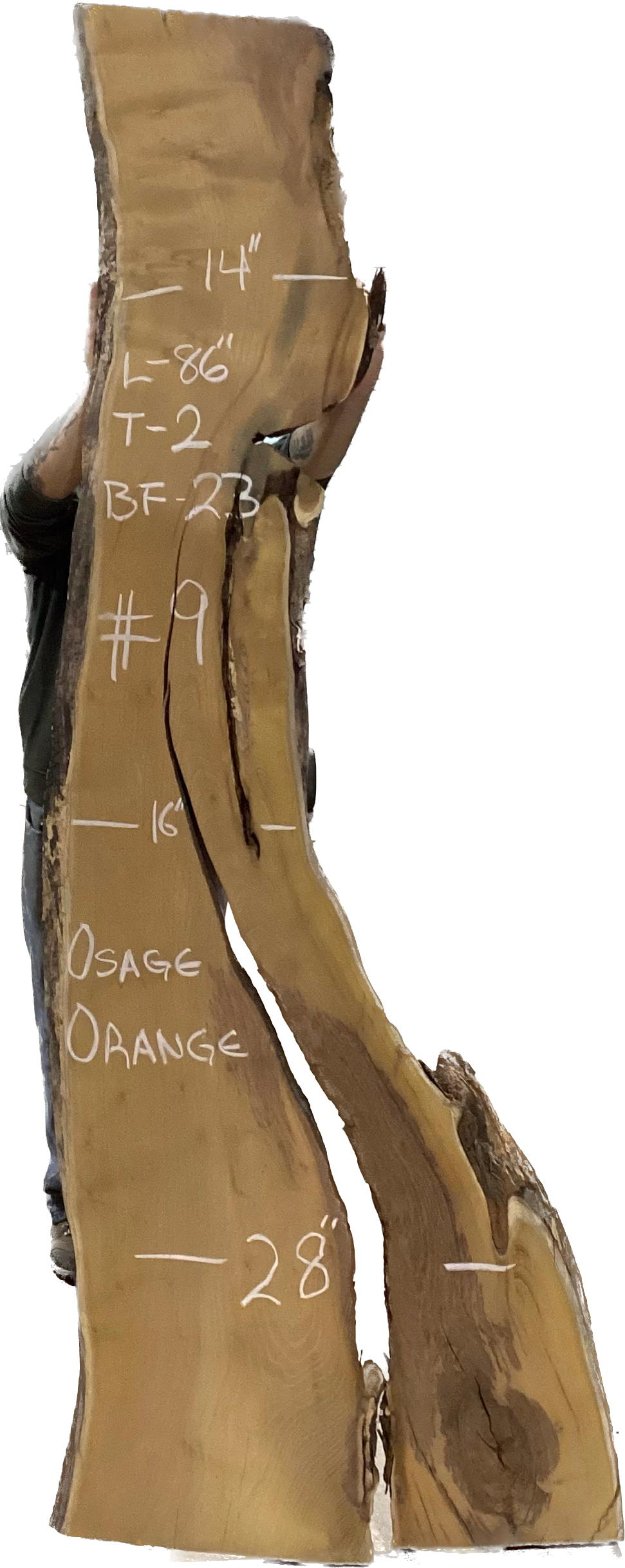


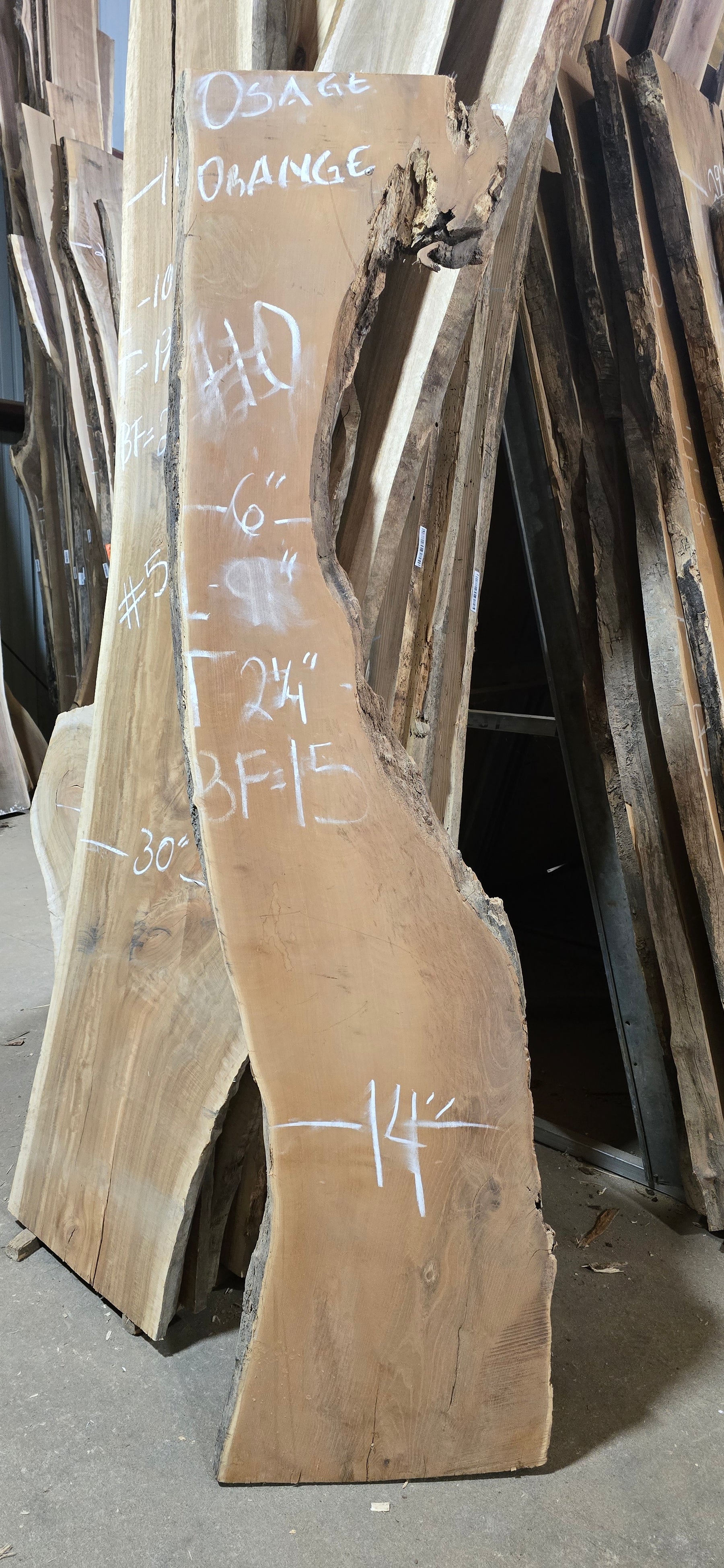
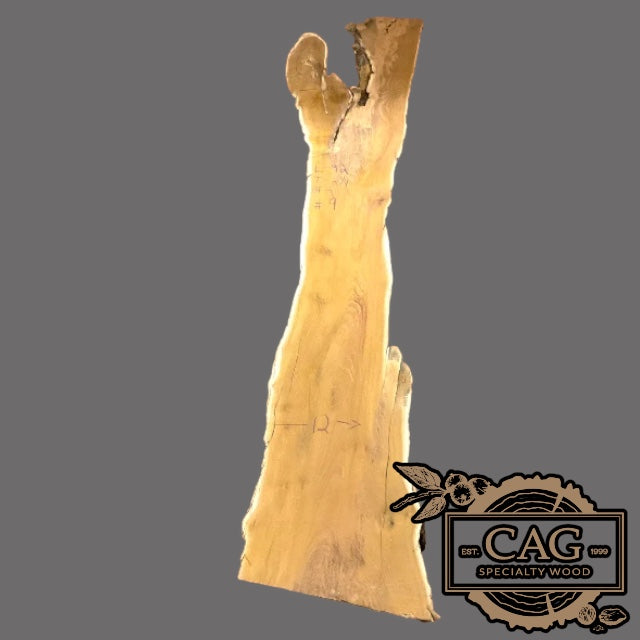
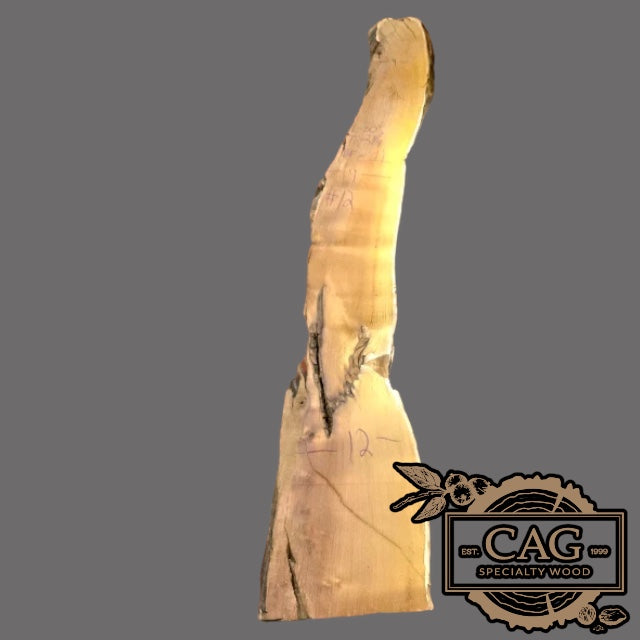
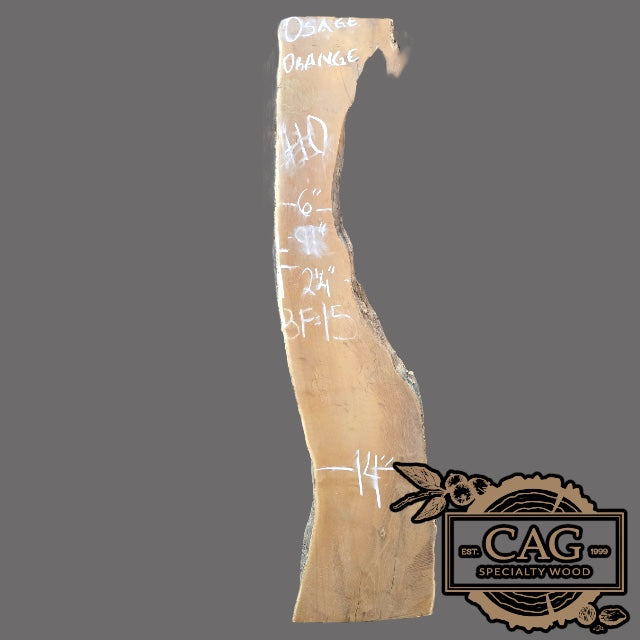
Osage Orange Slabs
|
Common Name(s): Osage Orange, Horse Apple, Hedge Apple, Bois d’arc Scientific Name: Maclura pomifera Distribution: South-central United States Tree Size: 50-60 ft (15-18 m) tall, 1-2 ft (.3-.6 m) trunk diameter Average Dried Weight: 54 lbs/ft3 (855 kg/m3) Specific Gravity (Basic, 12% MC): .76, .86 Janka Hardness: 2,620 lbf (11,640 N) Modulus of Rupture: 18,650 lbf/in2 (128.6 MPa) Elastic Modulus: 1,689,000 lbf/in2 (11.64 GPa) Crushing Strength: 9,380 lbf/in2 (64.7 MPa)* *Estimated crushing strength from data of green wood at: 5,810 lbf/in2 (40.1 MPa) Shrinkage: Radial: 3.8%, Tangential: 5.6%, Volumetric: 9.2%, T/R Ratio: 1.5
|
Color/Appearance: Heartwood is golden to bright yellow, which inevitably ages to a darker medium brown with time: primarily due to exposure to ultraviolet light. See the article Preventing Color Changes in Exotic Woods for more details.
Grain/Texture: Grain is straight, with a fine to medium texture. High natural luster.
Endgrain: Ring-porous; large to very large earlywood pores 2-3 pores wide, small latewood pores in clusters and tangential bands; tyloses extremely abundant; growth rings distinct; narrow to medium rays visible without lens, spacing normal; parenchyma vasicentric, lozenge, and confluent.
Rot Resistance: Osage Orange is extremely durable and is considered to be one of the most decay resistant woods in North America.
Workability: Working this Osage Orange can be difficult due to its hardness and density, though it is reported to have little dulling effect on cutting edges. It turns well, and also takes stains, glues and finishes well.
Odor: No characteristic odor.
Allergies/Toxicity: Sap has been reported to cause dermatitis. See the articles Wood Allergies and Toxicity and Wood Dust Safety for more information.
Pricing/Availability: Having typically small, crooked, and knotty trunks, Osage Orange isn’t usually harvested for lumber, but can occasionally be found for sale in either board or small turning block form. Due to its domesticity and adequate supply, the price should be moderate, though likely to be higher than most other native lumbers on account of its “specialty” status.
Sustainability: This wood species is not listed in the CITES Appendices or on the IUCN Red List of Threatened Species.
Common Uses: Fence posts, dye, archery bows, musical instruments, turnings, and other small specialty wood items.
Comments: Osage Orange has a relatively low modulus of elasticity compared to its weight and modulus of rupture which helps explain why it is sometimes used for archery bows. It’s sometimes called Bois d’arc, which literally means “bow wood” in American French.The wood is also very stable, with little seasonal/environmental movement.
One helpful characteristic that can help separate it from lookalikes such as Mulberry or Black Locust (besides being heavier) is that Osage Orange contains a water-soluble yellow dye, so putting shavings into water will turn the water yellow.
Commonly, the wood of a related South-American species—Maclura tinctoria—is imported as Argentine Osage Orange. This imported wood has the advantage of being available in larger sizes, with boards having less knots and defects than the smaller domestic species, Maclura pomifera. (Though it appears, at least on paper, that Maclura pomifera has a lower modulus of elasticity, making it more flexible—which may be good or bad depending upon the intended application.)
Osage Orange has been shown in studies to produce more BTUs when burned than any other domestic hardwood, and is accordingly sometimes used as fuelwood.
Related Species:
- Argentine Osage Orange (Maclura tinctoria)
Osage Orange Slabs
Osage Orange Slab 1 - 92"x23"x2"
4050 Old Cornelia Hwy
Gainesville GA 30507
United States
Wood Calculator Section
Need Help Figuring out how much you need ?
One Board foot = 144 Cubic Inches
Example: If you need a piece of wood 12 inches wide, 1 inch thick and 24 inches long, that is equal to 2 board feet.
12 inches x 1 inch x 24 inches = 288 inches. 288/ 144 = 2 board feet

